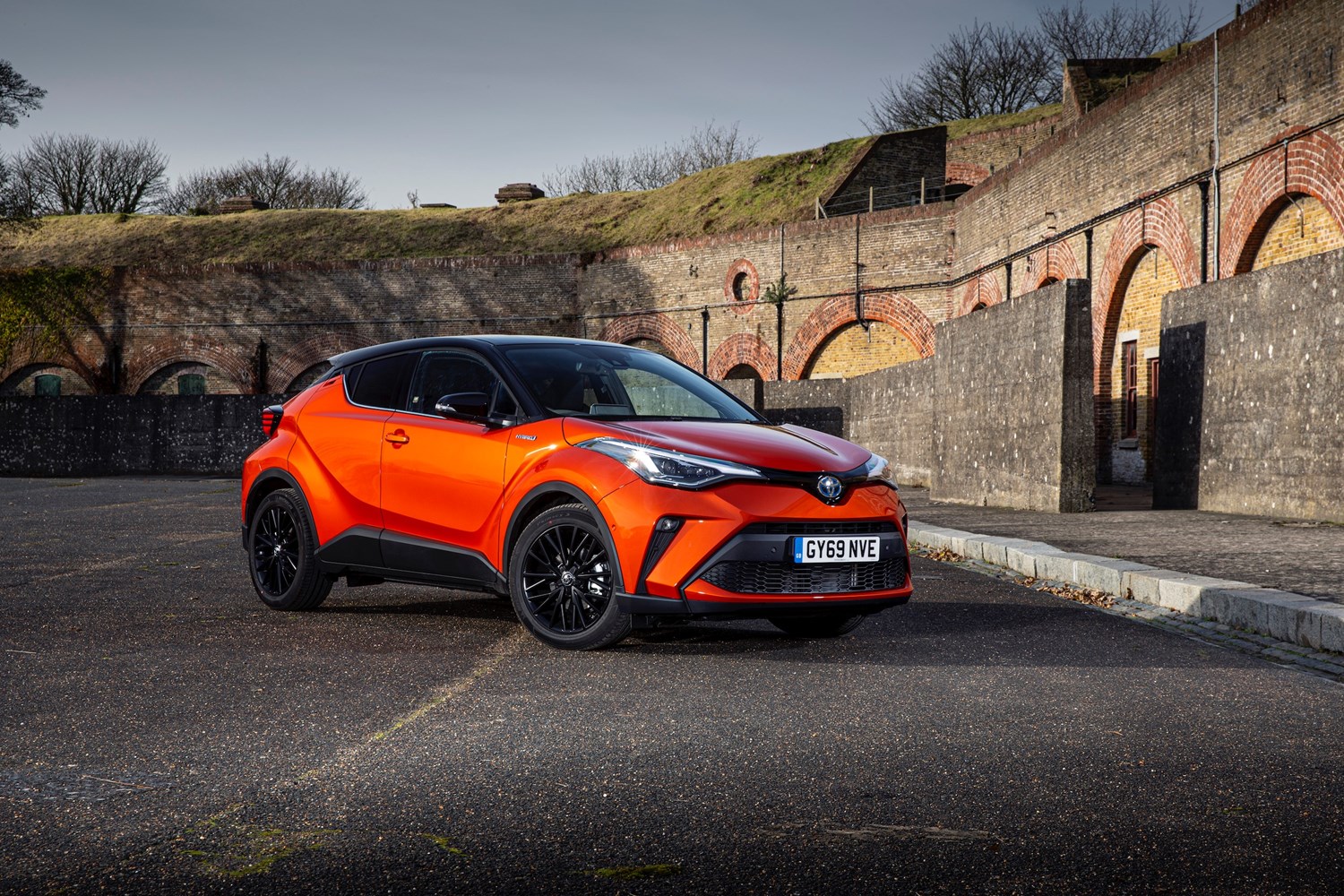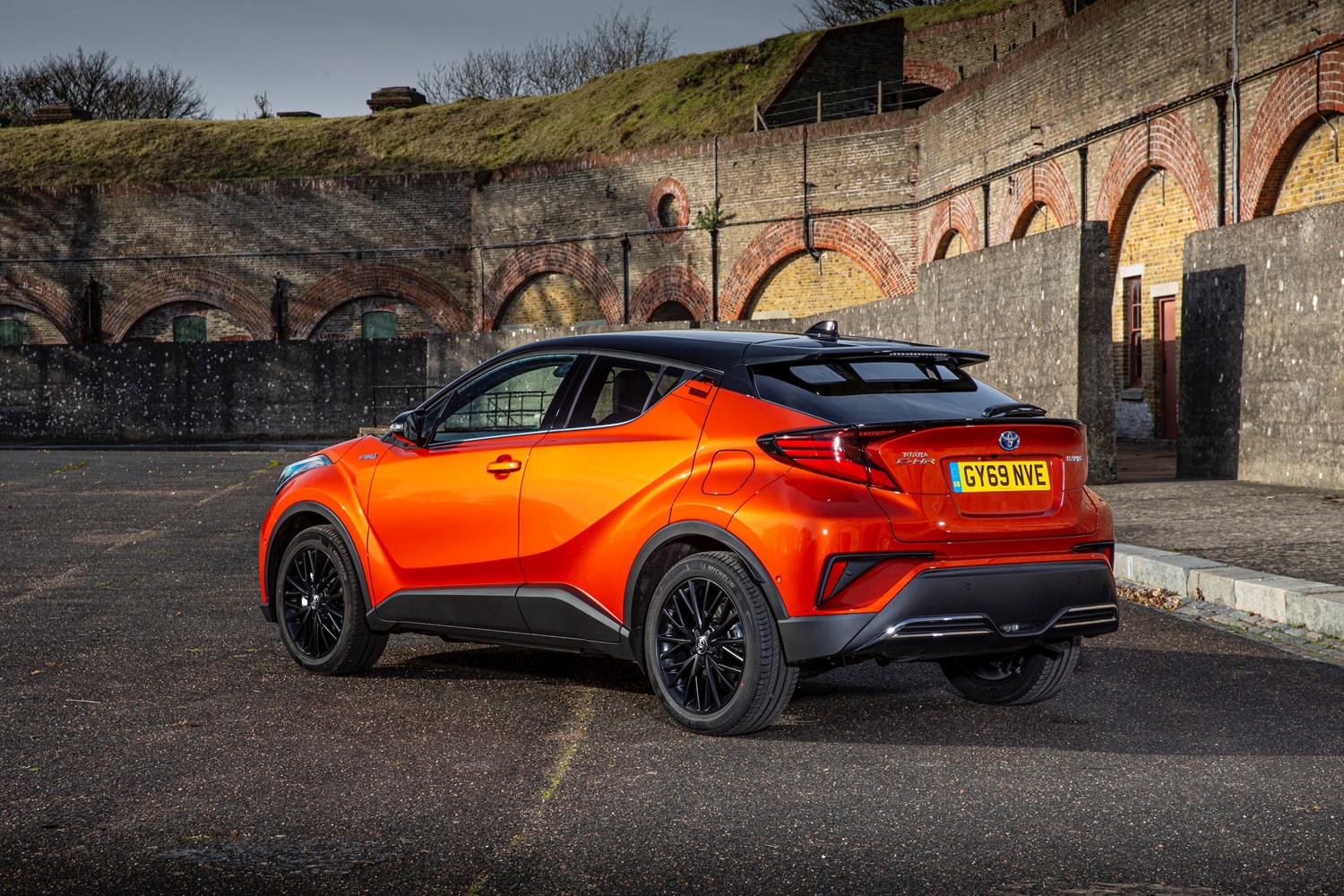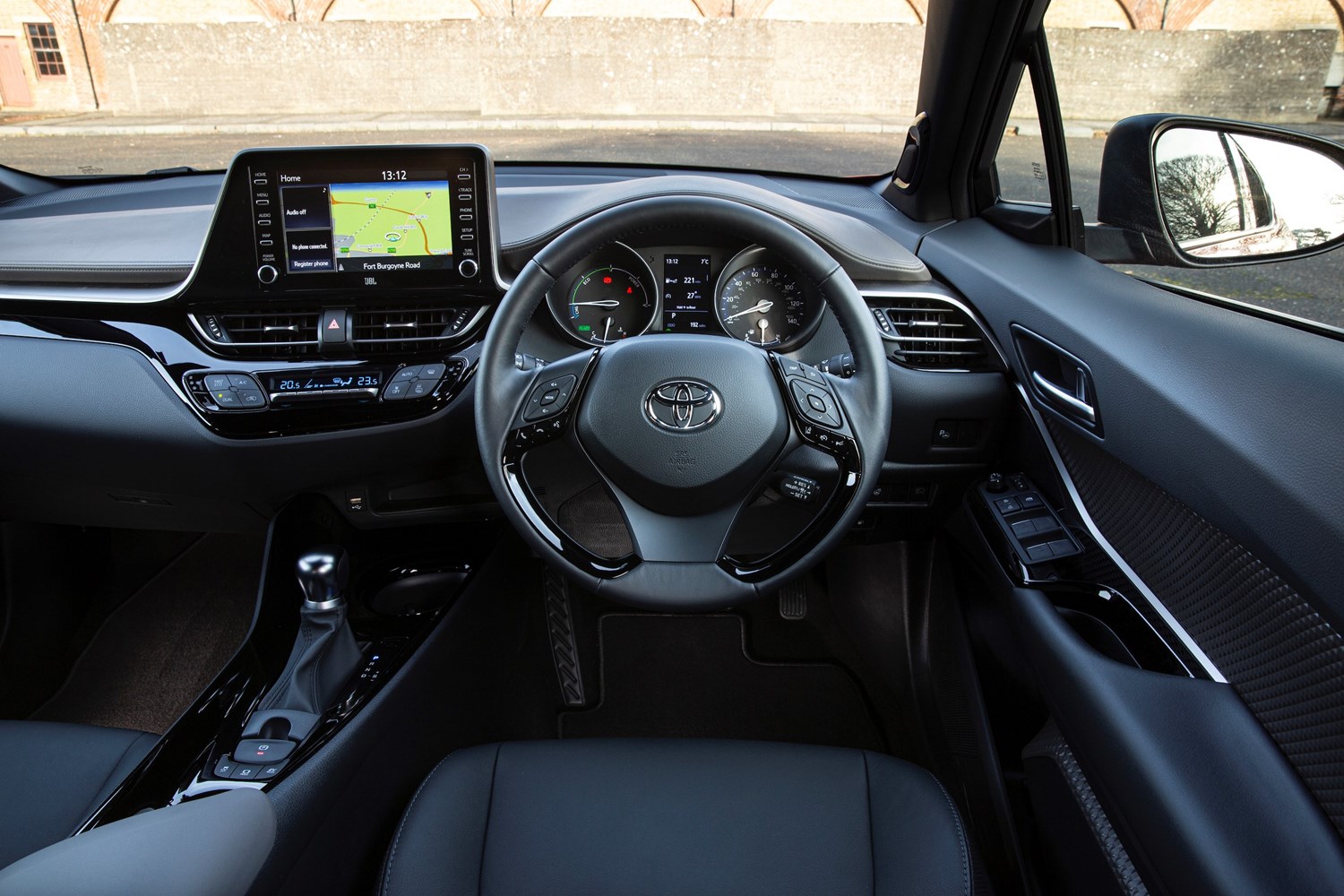Model Review
Toyota has a long history of producing hybrids, beginning with the Prius of the early 2000s, and today its range is largely made up of these electrified models.
So it was little surprise that when it introduced a new crossover in 2016 – the C-HR – it was its hybrid powertrains that grabbed the limelight, offering some of the first electrification seen in this segment at the time, though a petrol alternative remained.
Compared to the Toyota designs of the previous few years, the C-HR was a much bolder model, with a sleek coupe-like aesthetic making it stand out from the crowd, while generous levels of safety kit thanks to the standard-fit Toyota Safety Sense system added to the appeal.
Latest model
Despite its design remaining fresh, by the end of 2019 Toyota had already decided to update the C-HR. Key changes affected the powertrains, with the petrol engine being removed in favour of an all-hybrid range – mirroring changes made to the Yaris and Corolla. The same 1.8-litre petrol-electric setup as before remains, though is joined by a more powerful 2.0-litre setup
Design changes are minimal, though other notable differences include the introduction of Apple CarPlay and Android Auto – two things missing from the original C-HR.
Value for money
Due to the pricey nature of hybrid powertrains, it means the C-HR certainly isn’t the most affordable model in its segment. Prices start from £26,245, though if you want the 2.0-litre model, this will set you back in excess of £30,000, which is a lot of money for a car of this size. Admittedly the C-HR will be cheap to run and standard kit is generous – including 17-inch alloy wheels, LED headlights, adaptive cruise control and a reversing camera.
Good discounts are available by looking at used C-HRs, though, with prices starting from as little as £11,000 for a three-year-old version. Hybrid models hold their value well, though – easily commanding a £3,000 premium over petrol models. You can also expect to save around £4,000 on nearly-new models as well, meaning it’s well worth looking at pre-registered examples over brand new versions.
Looks and image
In recent years Toyotas has adopted quite bland styling, but the C-HR was a much bolder design, with its angular shape, coupe-like roof and bold colour and personalisation options giving it a much more modern feel. The fact design changes were so minimal as part of the late 2019 update also shows just how stylish this design remains.
The interior is also a stylish place to sit, with a well-integrated dashboard and a host of different materials that come together to offer a higher-quality feel than many of rivals. Each trim level also comes with a different interior accent – for example the high-spec Dynamic version benefits from a funky blue colour throughout. All dials are also clear and the systems are easy to use. In fact one of its few gripes in this respect here is the touchscreen, which isn’t quite as crisp to use as some of its rivals.
You might not expect a hybrid crossover to be all that good to drive, but the C-HR will be the car to change your mind. It’s a genuinely rewarding car to drive that handles very well, thanks to a low centre of gravity that helps to minimise body roll. This sportier feel isn’t at the expense of ride comfort, though, as even on larger alloy wheels the C-HR remains comfortable and ideal on the UK’s poor-quality roads. If you want the best fun, the sportier 2.0-litre hybrid model is the one to go for, though both annoyingly all powertrains come with a performance-sapping CVT automatic gearbox.
Space and practicality
The C-HR’s sportier stance and rakish looks perhaps unsurprisingly mean that this isn’t the most practical car in its class.
Next to rivals, the 377-litre boot isn’t huge, and offers a similar amount of space as to what you get on the firm’s Corolla hatchback. However, the shape itself is useful, with a low loading lip and roomy shape.
Rear space is more generous, though, with adults likely to be able to get comfortable thanks to plenty of headroom and legroom. However, small rear windows and large pillars means you don’t get the best view out of the back, which is something worth considering if you have children.
As for the C-HR’s safety, it received a five-star Euro NCAP rating, while it comes as standard with Toyota’s excellent ‘Safety Sense’ system – bringing adaptive cruise control, traffic sign recognition, lane keep assist and autonomous emergency braking.
Engine
As we’ve mentioned, all new C-HRs now come with hybrid powertrains, which deliver power to the front wheels via a CVT automatic transmission.
The entry-level setup is a 1.8-litre petrol-electric system producing 120bhp and 142Nm of torque. Despite the initial zippy nature of the electric, it’s not the quickest option – taking 10.8 seconds to reach 60mph and hitting a top speed of 105mph.
If your budget will stretch to it, the 2.0-litre hybrid powertrain is a much better choice, thanks to a punchier setup producing 182bhp and 190NM of torque. That helps to cut the 0-60mph time down to eight seconds and increases the top speed to 112mph.
Before the C-HR was updated in 2019, you could also choose it with a turbocharged 1.2-litre petrol engine producing 116bhp. Available with either a six-speed manual gearbox or a CVT automatic, this can reach 0-60mph in 10.7 seconds and hit 116mph maxed out. It was also available with all-wheel-drive, too, alongside the front-driven setup.
Running costs
Both hybrid powertrains on the C-HR should be cheap to run, with the 1.8-litre returning up to 58.9mpg, and the 2.0-litre managing a claimed 53.3mpg. CO2 emissions vary between 109g/km and 119g/km on the two versions.
If you’re looking for a standard petrol model, Toyota claims it’ll return a claimed 47.9mpg, with CO2 emissions of 135g/km, and it will be noticeably more expensive to run.
Insurance groups range from 15 to 22 on all models.
Things to look out for
Toyota has a superb reliability reputation, with its models known for being very dependable. Whether you’re looking at a petrol or hybrid model, you should have little trouble with either. You also get a generous five-year, 100,000-mile warranty too.
Rivals
There’s still a relatively slim number of regular hybrid crossovers available, so the closest competitors to this Toyota are the Hyundai Kona Hybrid and Kia Niro, as well as the pricier Lexus UX. If you’d prefer a plug-in hybrid the Renault Captur E-Tech and Mini Countryman PHEV are both worth considering, but will cost noticeably more. In terms of more conventional rivals, take a look at the Mazda CX-30, Peugeot 3008 and Seat Ateca.
Depreciation
Toyota’s hybrid models are very desirable for used buyers, and these models tend to hold their value better than petrol versions. It means your C-HR’s value will not plummet, though good savings are still available by choosing nearly-new models.





